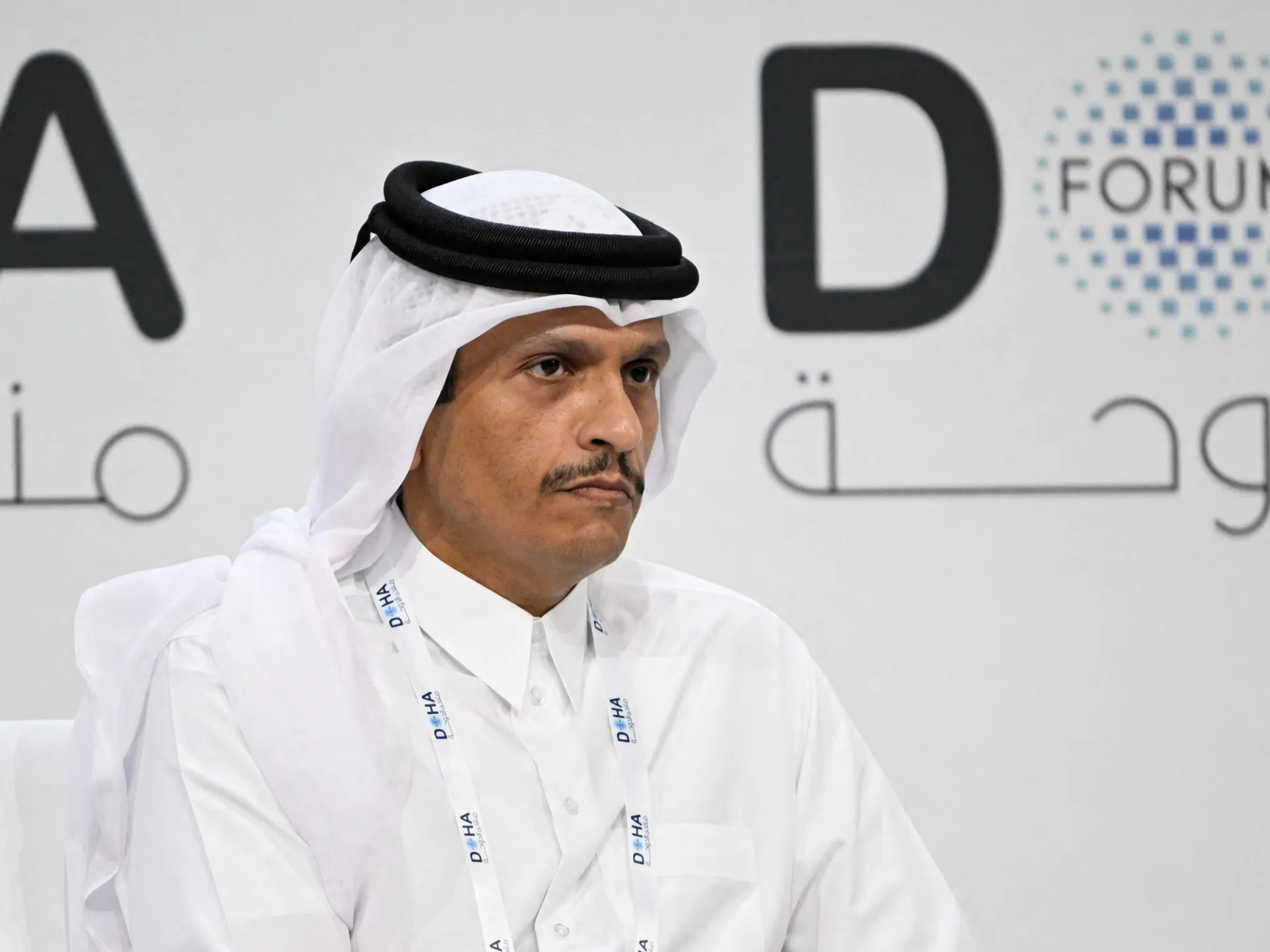Qatar’s PM calls for inclusive engagement to achieve elusive regional peace | Israel-Palestine conflict News
Doha, Qatar – The prime minister of Qatar, Sheikh Mohammed bin Abdulrahman bin Jassim Al Thani, has called for inclusive engagement, including with non-state actors such as the Palestinian group Hamas, as the only viable route to regional peace.
Speaking to United States journalist Tucker Carlson on Sunday at the Doha Forum, Sheikh Mohammed said you cannot resolve or reach a solution “if you have no one speaking to non-state actors”.
Recommended Stories
list of 3 itemsend of list
The start of Qatar’s relationship with Hamas goes back more than 10 years, he said, adding that opening the group’s office in the country came at the request of the US, aiming to enhance communications with the armed group.
“When they [Hamas] moved their office back in 2012 here [Qatar], it was used only for communication and to facilitate ceasefires and aid to Gaza,” Sheikh Mohammed, who is also the foreign minister, said.
Qatar has also hosted the Taliban’s political office since 2013, during the group’s war with the US and the former Afghan government. The office was also established at Washington’s request to create a venue for potential peace negotiations.
Sheikh Mohammed refuted allegations that any money going to Gaza went to Hamas, insisting it goes to the Palestinian people.
“Politicians are trying to use this for short-term political gains … to fuel their narratives,” the prime minister stated.
“All our aid, financing, and all our support … went to the people in Gaza, and was a very transparent process that the United States is very aware of … [and] Israel was the one facilitating.
“This communication has led to ceasefires, has led to the release of hostages, has led to alleviating the suffering of the people over there,” he added.
Israeli attack on Qatar ‘unethical’
Discussing Israel’s shocking attack on Qatar in September, Sheikh Mohammed described it as an “unethical move”.
“The concept of mediation is like having a safe place for conflicted parties to achieve a deal, to end wars and to end conflicts,” he said.
“The mediator being bombed by one of the parties – this has been unprecedented.”
The prime minister revealed that US President Donald Trump was caught off guard by Israel’s actions.
“President Trump was very clear from the beginning… When he was informed about the attack, he assigned one of his advisers to reach out to us immediately. He expressed his frustration, his disappointment, because he knows everything about the process and how helpful we were throughout,” he said.
“He made it very clear for everyone that this is like the red line, that he doesn’t want anyone to cross.”
Reconstructing Gaza
On the reconstruction of a devastated Gaza, following Israel’s ongoing two-year genocidal war, Sheikh Mohammed said Qatar would “continue supporting the Palestinian people”.
“We will do whatever to alleviate their suffering,” he emphasised.
However, he said Qatar “will not write the cheque for what others destroyed”.
“When it comes to the Russia-Ukraine conflict, we hear that Russia should fund all the reconstruction, and their assets should be seized to fund all the reconstruction of Ukraine,” he pointed out. “[But] when you are talking about Israel … and you say that Israel has the responsibility to rebuild what is destroyed, they will tell you no. It’s really a very ironic double standard.
“Our position is that our payments will go only to help the Palestinian people, if we see that the help coming to them is insufficient,” Sheikh Mohammed added.
According to UN estimates, 92 percent of all residential buildings in Gaza have been damaged or destroyed since Israel’s war on the besieged enclave began on October 7, 2023, producing between 55-60 million tonnes of rubble. It has been estimated by the UN that it will take decades to rebuild.
Moreover, the prime minister firmly opposed any forced displacement of Palestinians in Gaza by Israel.
“It’s hurting us when we hear people talking about the people of Gaza as some sort of different people,” he said.
“They have the choice where to go, and they don’t want to leave their country,” he added. “I don’t see anyone has the right to deport them or to force them to go somewhere else.”
